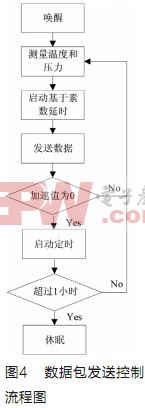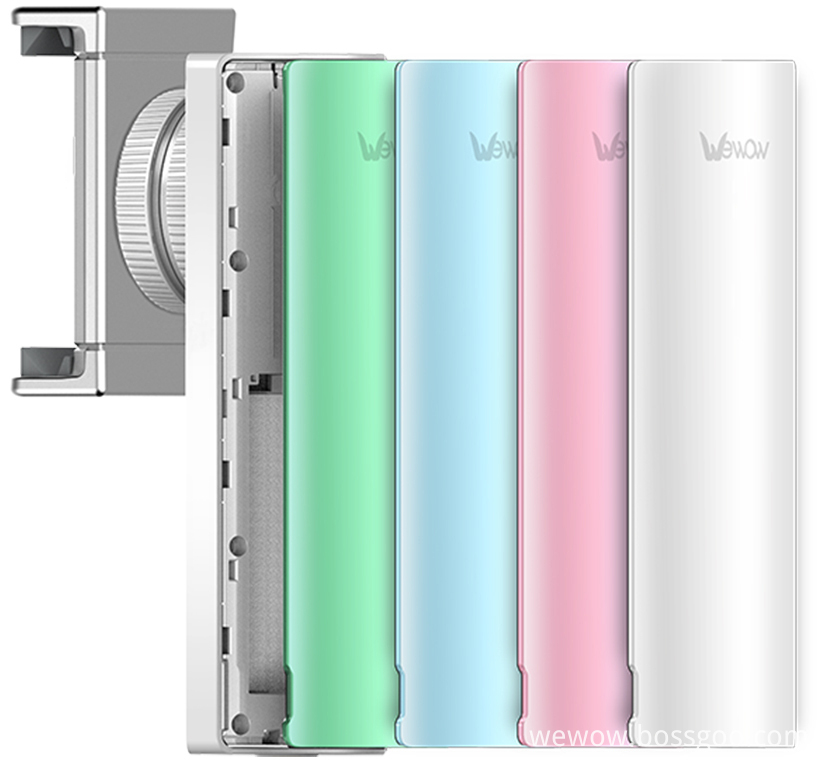introduction
The automobile tire pressure monitoring system (TPMS) is an early warning system that can automatically detect the tire pressure and temperature of the automobile tires and alarm the tire abnormal conditions. TPMS system can be divided into indirect and direct types. The indirect type uses the wheel speed sensor of the automobile ABS system to compare the speed difference between the wheels to monitor the tire pressure. The direct type uses the pressure sensor installed in each tire to directly measure the air pressure of the tire, and transmits it to the receiver installed on the bridge through wireless modulation [1].
At present, the direct TPMS transmitter module mostly adopts the following two schemes: one is battery + single-chip microcomputer + sensor + radio frequency chip, and the other is battery + sensor with integrated MCU (microcontroller) + radio frequency chip. The former solution is gradually being eliminated by the market due to its low integration, large volume and high power consumption. The latter solution is the mainstream product design form on the market. Because the amplitude-shift keying (ASK) signal modulation mode has the advantages of low power consumption, high sensitivity and low cost, this paper selects the MAX7044 based on the ASK mode as the transmitter chip, and the SP30 of Infineon as the sensor design completes a new type of tire Pressure launch module.
Transmitter hardware design
The hardware of the transmitting module is mainly composed of the sensor SP30, MAX7044, battery and antenna, as shown in Figure 1. The sensor SP30 of the integrated MCU sends the data to the MAX7044 for transmission through the serial communication interface, and the battery supplies power for both. The working temperature of the device selected in this design is automotive grade (-40 ~ + 125 ℃) to meet the requirements of reliable operation in the complex and harsh environment of the launch module in the tire. The scheme follows European standards, and the center frequency of wireless signal modulation is 433.92MHz.

SP30 Application Design
SP30 is a special sensor chip for tire pressure detection launched by Infineon. It not only has pressure, temperature, acceleration and battery voltage sensors, but also integrates an 8-bit Harvard RISC single-chip microcomputer with an operating voltage range of 1.8 ~ 3.6V and pressure measurement. The range is 0 ~ 3.5Bar, and the temperature measurement range is -40 ~ + 125 ℃. The application circuit is shown in Figure 2 [2]. SP30 peripheral devices are few, only need to connect a 3V battery and filter capacitor.
SP30 can work in four modes, namely low power consumption mode, idle mode, running mode and thermal shutdown mode. Among them, the low power consumption mode has the lowest power consumption, so the SP30 should be in this working mode as much as possible to ensure a long service life of the battery. P14 and P15 are serial communication ports, P14 is serial data, P15 is the external clock provided by MAX7044, the clock frequency is 847.5kHz, and P17 is uselessly grounded. XP1 is the debugging interface.
MAX7044 RF application design
The wireless transmitter chip is the key to the reliable operation of the transmitter module. Since the launch module is installed on the hub and powered by a lithium battery with limited energy, the selection of the launch chip needs to have the following two characteristics:
â— Low power consumption, support ASK modulation, there are multiple working modes, easy to manage power consumption according to specific working status, in order to extend the battery life as much as possible;
â— The minimum working voltage of the chip is low, and the transmitting power is large enough.
According to the above characteristics, and after analysis and comparison, we finally chose the MAX7044, a cost-effective launch chip.
The MAX7044 is an ASK modulation chip produced by Maxim in the frequency range of 300MHz to 450MHz. The maximum output power is + 13dBm (50Ω load), the supply voltage is minimum 2.1V, and the low-power mode current is only tens of nanoamperes. Circuits such as crystal oscillators and phase-locked loops are designed in a small 8-lead SOT23 package [3]. The application circuit shown in Figure 3 mainly includes three parts: power supply decoupling circuit, crystal oscillator circuit and antenna matching circuit. Because the RF (radio frequency) chip is very sensitive to the noise of the power supply, a proper and effective power supply decoupling circuit can well suppress the noise and improve reliability. Therefore, a decoupling capacitor C5 is arranged near the 3V power supply pin. The commonly used modulation frequencies of MAX7044 are 315MHz and 433.92MHz, and the crystal oscillators used for different modulation frequencies are also different. The relationship between the modulation frequency fRF and the selected crystal frequency fXTAL is: fXTAL = fRF / 32. The modulation frequency of this design is 433.92MHz, then the external crystal frequency G1 should be 13.56MHz, and the output frequency CLK-OUT is the crystal frequency divided by 16 or 847.5kHz. The output frequency CLK-OUT is used to provide operation timing for the microcontroller inside the pressure temperature sensor SP30. The output impedance of the MAX7044 power amplifier (PA) is 125Ω. To match the antenna with a specific impedance, an impedance conversion circuit must be configured to reduce the transmission power loss and improve the antenna efficiency. This design uses the valve as the antenna, C10 is used to cancel most of the antenna inductance, C1, C2 and L1 form a low-pass filter, which can suppress the higher harmonics of the PA output. L2 is used to suppress radio frequency interference from the power supply, and C3 is a DC blocking capacitor [4]. Through software simulation and repeated test verification, the best matching circuit is shown in Figure 3.

Launch module software design
Due to the limitation of the space and weight in the tire, the launch module can only be powered by a micro battery with limited capacity. Therefore, to ensure the life of a single launch module for more than 2 years, how to save energy must be considered. In addition, at least four transmitter modules must be configured for a car without a spare tire. Since the receiver cannot receive multiple wireless signals at the same time, if there is a transmitter module transmitting data to the receiver at the same time, data collision will inevitably occur, resulting in failure and Power consumption increases, so how to avoid sending conflicts is another key issue to be solved by software algorithms.
The data frame format used in this design is shown in Table 1. The preamble and stop bits are used to identify the start and end of a frame of data. The device ID is a globally unique identification of the tire launch module to distinguish different tires. The status information includes battery power supply (SP30 has low voltage detection) and sensor measurement failure, and the checksum is used to check the correctness of data transmission.
â‘¡ How to avoid sending conflicts
In the design, we used a dynamic delay algorithm based on prime numbers. When a valid acceleration signal is detected, the four tire launch modules are woken up and start the pressure and temperature detection process. After the data detection is completed, a dynamic delay is performed according to the prime number, and the data is sent out once the delay time is reached. After the transmission is completed, the transmitter is automatically turned off and a new round of data detection is started. The configuration of the delay parameters of each tire is as follows: the delay of the front left tire transmission module changes according to a period of 250ms & TImes; N1 (N1 = 2, 19), and the delay of the right front tire transmission module changes according to a period of 250ms & TImes; N2 (N2 = 3, 17), left The delay of the tire launch module changes according to a period of 250ms & TImes; N3 (N3 = 5, 13), the delay of the right rear tire launch module changes according to the period of 250ms & TImes; N4 (N4 = 7, 11), N1, N2, N3, N4 are different Prime number [5]. This algorithm based on the dynamic delay of prime numbers can not only effectively avoid transmission conflicts of each transmitting module, but also reduce energy consumption and extend battery life.
â‘¢ How to save energy
Since the transmission module consumes the most power when collecting data and transmitting data frames, the transmission frequency and the number of data frames transmitted each time should be reduced as much as possible under the premise of ensuring correct data transmission. The software flow of the transmission module is shown in Figure 4. The SP30 integrates an acceleration sensor. When it detects that the car is stationary for more than 1 hour, it automatically enters a low-power sleep mode (the current is in microampere level). At this time, data detection and transmission are no longer performed. After the vehicle moves, the acceleration signal wakes up the transmitter module, and after the data collection is completed, a dynamic delay algorithm based on prime numbers is started, that is, the data is sent out after 250ms × N (N is a random prime number less than 20) delay. Practical tests have shown that the life of the transmitting module can be effectively controlled by flexible switching of the working mode and reducing the transmitting frequency.


Performance Testing
This design has been applied in product design. After repeated tests, the specific performance indicators are as follows:
â— The tire pressure can be monitored in the range of 0 ~ 3.5Bar, with a resolution of 25mBar, and the tire pressure of cars is usually between 2.2Bar and 2.8Bar;
◠Monitorable temperature range: -40 ~ 125 ℃, resolution 2 ℃, car tire temperature is generally around 75 ℃;
â— The transmission power of the tire pressure sensor is measured at about -45dBm with a spectrum analyzer;
â— A 500mAh battery is used. If the vehicle runs normally for 12 hours a day, the transmitter module can work normally for more than 5 years.
Conclusion
This paper designs and implements a direct tire pressure monitoring system launch module. The launch module based on the SP30 sensor and the MAX7044 transmitter has high integration and small size, and can simultaneously monitor three key parameters of tire pressure, temperature and battery voltage while the car is running. When there are abnormal conditions such as air leakage, overpressure and high temperature, the tire can automatically alarm in time to ensure driving safety.
references:
[1] Wen Rui. Design of launch module of automobile tire pressure monitoring system [J]. Automation Technology and Application, 2008,28 (7): 80-81
[2] Infineon.Tyre Pressure Monitoring Sensor SP30 user manual [EB / OL]. Http: //TypeByName.html? Q = sp30
[3] Maxim.300MHz to 450MHz High-Efficiency, Crystal-Based + 13dBm ASK Transmitter MAX7044 datasheet [EB / OL] .http: //datasheets.maxim-ic.com/en/ds/MAX7044.pdf
[4] Maxim.MAX7044 Evaluation Kit [EB / OL] .http: //datasheets.maxim-ic.com/en/ds/MAX7044EVKIT.pdf
[5] Xiao Wenguang. New TPMS design based on ZigBee technology [J]. Today Electronics, 2009 (10): 42-43
1 2
Traditionally, stabilizer is heavy and too big to take. Fashion stabilizer can solve all these problems. It`s small and light.

Fashion gimbal stabilizer are designed as pocket size, portable and easy to take. You can carry it as easy as smartphone!

Wewow focusing on handheld stabilizer is a technology company which does R & D independently. With Wenpod series product released, the company achieved the industry's praise and quickly became the leader of the smart stabilizer industry.
Our service
1. Reply to you within 24 hours.
2. Already sample: within 1-2days.
3. Shipping date: within 24 hours once get the payment.
4. 12 months warranty.
5. After-sales service, solve within 3 working dates.
If you have any questions, please contact with us directly.
Wewow appreciates domestic and international business relationship!
Fashion Stabilizer,Fashion Stabilize Regulator,Professional Fashion Stabilizer,Voltage Stabilizer
GUANGZHOU WEWOW ELECTRONIC CO., LTD. , https://www.stabilizers.pl